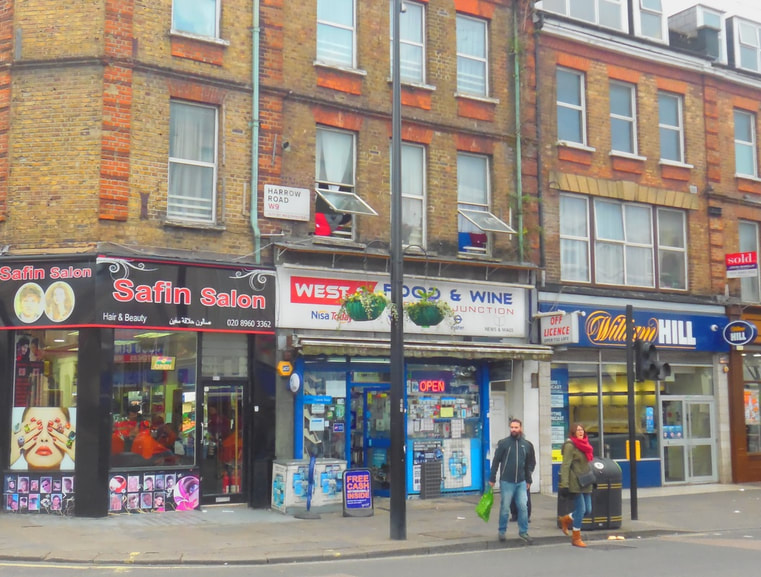Bill Schwarz
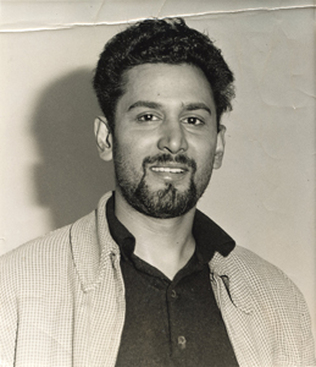
This article appears in the book London Fictions, edited by Andrew Whitehead and Jerry White – and published by Five Leaves. You can order it direct from the publishers by clicking here.
The Lonely Londoners, first published in 1956, opens:
One grim winter evening, when it had a kind of unrealness about London, with a fog sleeping restlessly over the city and the lights showing in the blur as if is not London at all but some strange place on another planet, Moses Aloetta hop on a number 46 bus at the corner of Chepstow Road and Westbourne Grove to go to Waterloo to meet a fellar who was coming from Trinidad on the boat-train.
This sentence conforms to a certain mode of realism, naturalism even, in which the presence of the city is precisely located: Chepstow Road, Westbourne Grove, Waterloo Station, the number 46 bus. On the other hand, paradoxically, this is a realism intent on communicating the ‘unrealness of London’, a phenomenon which produces a sensation ‘as if is not London at all but some strange place on another planet’.
The notion that London is in some sense ‘unreal’ has a long pedigree to it, not least in the imagination of high modernism. Selvon has confirmed the degree to which T.S. Eliot was an influence, and the parallels between The Waste Land and The Lonely Londoners are there for all to see, not least in the shared invocation of an ‘unreal London’. However Selvon’s conception of the interplay between the reality and unreality of the city is particular. It derived principally from the fact of his being a colonial migrant, part of the great Caribbean diaspora which transformed the life of metropolitan Britain in the postwar years.
 This was as much a sociological reality as it was a matter of aesthetic strategy: for the first generation of postwar Caribbean migrants London was indeed ‘unreal’, barely conforming to the lessons they had learned about the imperial capital back home. From this collective experience there evolved a new way of writing about London, evident in The Lonely Londoners, which might be exemplified as a new form of ‘diasporic’ realism.
This was as much a sociological reality as it was a matter of aesthetic strategy: for the first generation of postwar Caribbean migrants London was indeed ‘unreal’, barely conforming to the lessons they had learned about the imperial capital back home. From this collective experience there evolved a new way of writing about London, evident in The Lonely Londoners, which might be exemplified as a new form of ‘diasporic’ realism.
When Selvon himself arrived from Trinidad in 1950 the London he came to know resembled closely the London of his later fictional Moses Aloetta. He initially stayed in a hostel close by Earl’s Court, doing menial jobs to support his writing and, when the opportunity presented itself, doing readings for the BBC’s ‘Caribbean Voices’ programme, whose studios were located in Oxford Street. He came to be well acquainted with the Bayswater-Harrow Road area, as well as with the more bohemian BBC haunts north of Oxford Street. For all the experienced ‘unreality’ of London presented in The Lonely Londoners, the geographical London it represents is accurate in all its details. The 46 bus route, which allowed Moses to travel from Westbourne Grove to Waterloo, was indeed a route Selvon himself would have known: this was a service, in the fifties, which originated in Neasden Lane, threading its way south along Harrow Lane, before heading for Victoria and Waterloo, although (a sign of the times) with no Sunday or evening services.

Many who made the journey from the Caribbean to England welcomed the prospect of abandoning the ‘unreality’ of the colonial periphery for the putative ‘reality’ of the metropolitan centre where modern life happened. Galahad, in The Lonely Londoners, is driven by the allure of the city. ‘Jesus Christ, when he say “Charing Cross”, when he realise that it is he, Sir Galahad, who going there, near that place that everybody in the world know about … he feel like a new man … Galahad feel like a king living in London.’ In the novel Galahad condenses the hope that the unreal self of the colonial, the split self torn between a dark skin and a white mask, might be overcome and that the West Indians might yet become truly modern, agents of their own destinies. But at the very moment he feels this promise most intensely – ‘This is London, this is life oh Lord’ – an everyday, banal racial encounter erupts, innocent enough to begin with, yet with the power to unhinge Galahad’s sense of self. Back in the solitude of his room, in a moving soliloquy, he addresses his own blackness: ‘”Colour, is you that causing all this you know … Is not me, you know, is you!”’
The actual England he encountered as a migrant – what Selvon called ‘the actualities’ – had its own kind of ‘unrealness’, for it didn’t match at all the idealized expectations which had been incubated in the Caribbean. In shops, at work, in the street, he and a generation of West Indian migrants encountered not the abstract England of their school curriculum, nor an England derived from their reading of Dickens or Hardy, but an altogether more complex and less enchanted location, in which their role as ‘natives’, far from disappearing, took on new, hybrid forms: ‘the land did not deceive, as the people did’.

However the magic of The Lonely Londoners works by presenting this specifically migrant view of London. It is the black West Indian, penniless and despised, who mutates into the authoritative anthropological investigator. It becomes the task of the novel’s narrator to explain to the reader the peculiar habits of the native Londoners. Indeed, the West Indians – ‘the boys’ in Selvon’s argot – both as migrants and transients have a privileged perspective on the city, their mobility giving them an access to the entire city customarily denied to the domesticated native. ‘It have people living in London who don’t know what happening in the room next to them, far more the street, or how other people living.’
Selvon has a sharp eye for the city’s dispossessed, white as well as black, creating vignettes which resonate in the memory as much as the monochrome photographs of Bill Brandt or Bert Hardy, from the same period.
A lot of the men get kill in the war and leave widow behind, and it have bags of these old geezers who does be pottering about the Harrow Road like if they lost, a look in their eye as if the war happen unexpected and they still can’t realise what happen to the old Brit’n. All over London you would see them, going shopping with a basket, or taking a dog for a walk in the park, where they will sit down on the bench in winter and summer. Or you might meet them hunch-up in a bus queue, or waiting to get the fish and chips hot. On Friday or Saturday night, they go in the pub and buy a big glass of mild and bitter, and sit down by a table near the fire and stay here coasting lime till the pub close.
Or he observes, too, the men who go singing – begging – through the smart streets of the capital.
… now and then a window would open and somebody would throw down threepence or a tanner, and the old feller would have to watch it good else it roll in the road and get lost. Up in that fully furnished flat where the window open … it must be have some woman that sleep late after a night at the Savoy or Dorchester, and that she was laying under the warm quilt on the Simmons mattress, and she hear the test singing … Could be that she have a nice night and she is in a good mood, or could be, after the night’s sleep, she thinking about life and the sound of that voice quavering in the cold outside touch the old heart. But if she have a thought at all, it never go further than to cause the window to open and the tanner to fall down. In fact when the woman throw the tanner from the window she didn’t even look down: if a man was a mile away and he was controlling a loudspeaker in the street moving up and down, the tanner would have come the same way. Also, for the old test who singing, it ain’t have no thought at all about where this tanner come from, or who throw it, man, woman or child, it ain’t make no difference.
The narrator concludes:
When you come to think of it, everything in life like that …
People in the world don’t know how other people does affect their lives.
London, in this vision, operates as an inhospitable, atomized environment, where human actions are little more than mechanical reflexes. This is the picaresque London made familiar by Defoe’s Moll Flanders – Moll and Moses; Moses and Moll – in which good and bad fortune are entirely random, and where events exist beyond the control of the city’s more hapless inhabitants. The endless search for food (‘rations’) and shelter predominates. The bodies of white women and black men are bartered indiscriminately. Moses, that ‘veteran’ of the city – ‘Mr London’ – has seen it all before. ‘”Take it easy”’, he counsels Galahad, ’”London will do for you before long”’, advice repeated later in the novel.
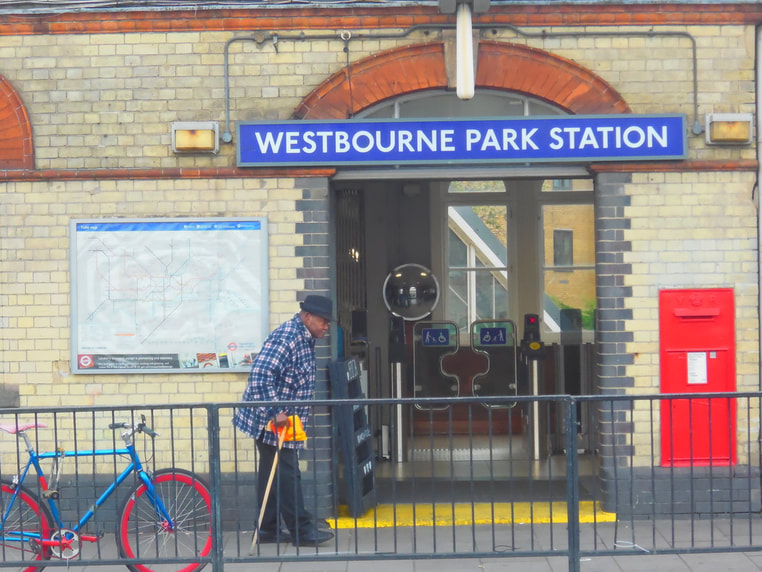 Throughout the pleasures of migration, and the pleasures of the city, are almost exclusively organised through the optic of male sexual desire. There are moments when Selvon makes it clear that the objectification of black male bodies is the cause of violent retribution: no such understanding occurs in his (or in that of ‘the boys’’) parallel conceptualisation of white women as ‘pussy’ or ‘skins’. The deep sympathies of the novel lie with the male migrants, the lonely Londoners who against all odds make a life for themselves. As they do so, in Selvon’s terms, they undermine the larger social system which conspires to substitute a life governed by human reciprocity – in which ‘how … people does affect’ others is recognised, known and acted upon – for one driven by a utilitarian imperative alone. Yet such a vision is compromised by the author’s relentless objectification of white women, barely Londoners at all in Selvon’s view of things, for it reveals the Caribbean men of his imagination to be complicit in the degradation of the city which otherwise, he suggests, they counter in their very beings.
Throughout the pleasures of migration, and the pleasures of the city, are almost exclusively organised through the optic of male sexual desire. There are moments when Selvon makes it clear that the objectification of black male bodies is the cause of violent retribution: no such understanding occurs in his (or in that of ‘the boys’’) parallel conceptualisation of white women as ‘pussy’ or ‘skins’. The deep sympathies of the novel lie with the male migrants, the lonely Londoners who against all odds make a life for themselves. As they do so, in Selvon’s terms, they undermine the larger social system which conspires to substitute a life governed by human reciprocity – in which ‘how … people does affect’ others is recognised, known and acted upon – for one driven by a utilitarian imperative alone. Yet such a vision is compromised by the author’s relentless objectification of white women, barely Londoners at all in Selvon’s view of things, for it reveals the Caribbean men of his imagination to be complicit in the degradation of the city which otherwise, he suggests, they counter in their very beings.
Some two-thirds the way through the novel, darkness and dampness having become repeated motifs, the tone momentarily shifts and in breathless, lyrical and seductive prose – with no punctuation to impede its pace – Selvon celebrates the coming of summer in the city.
Oh what a time it is when summer comes to the city and all them girls throw away heavy winter coat and wearing light summer frocks so you could see the legs and shapes that was hiding away from the cold blasts and you could coast a lime in the park …
The reader is drawn into this change of mood. A genuine eroticism seems to enter the tale, embracing not only the black migrants but the native English as well, dispatching the pervasive gloom of the earlier parts of the novel:
… everywhere you turn the English people smiling isn’t it a lovely day as if the sun burn away all the tightness and strain that was in their face for the winter and on a nice day every manjack and his brother going to the park with his girl and laying down on the green grass and making love
But even in this moment of ebullience darker themes intrude, the erotic release generating violence and disaffection. The narrator indicates that with the arrival of summer ‘your’ first impulse – an unspecified ‘you’: ‘the boys’? the reader? men in general? – is to barter with the prostitutes around Hyde Park Corner. A woman with whom Moses makes love nearly dies, or at least he believes that she is on the point of death; another is just coming off smack. Voyeurs cruise the park to observe the couplings between prostitutes and their clients. Black men are propositioned by whites to take part in a variety of sexual, or putatively more innocent, encounters for money. Prostitutes beat clients, clients beat prostitutes. Young black women – ‘fresh blood’ in the narrator’s terms – join the ranks of those selling their bodies, ‘but as far as spades hitting spades it ain’t have nothing like that for a spade wouldn’t hit a spade when it have so much other talent on parade … ‘. White women get off by inciting West Indian men to play the primitive. Black men beat white lovers.
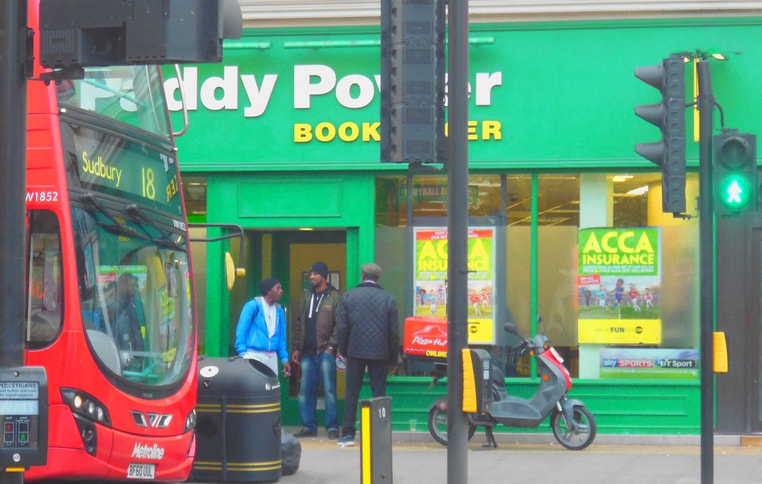 Once darkness falls the entire city is propelled into an unresolved force-field of polymorphous sexual and racial energy, where the main currents of human intercourse reproduce the mechanics of everyday exploitation.
Once darkness falls the entire city is propelled into an unresolved force-field of polymorphous sexual and racial energy, where the main currents of human intercourse reproduce the mechanics of everyday exploitation.
… all sorts of fellars from all walks of life … people wouldn’t believe you when you tell them the things that happen in the city … lot of people in London who cork their ears and wouldn’t listen but if they get the chance they do the same things themselves everybody look like they frustrated in the big city the sex life gone wild … all these things happen in the blazing summer under the trees in the park on the grass with daffodils and tulips in full bloom and a sky of blue oh it does really be beautiful then to hear the birds whistling and see the green leaves come back on the trees and in the night the world turn upside down and everyone hustling that is life that is London … .
It’s difficult to be sure of the degree to which the voices of the narrator and of the author are, or are not, conflated in these passages. The line separating indictment, on the one hand, and on the other, approval or acceptance (in the terms which Moses makes peculiarly his own: “So it go, boy”), seems constantly to be on the move. Either way, these pages produce a disturbing accumulation of images. They testify, not simply to the predispositions of ‘the boys’, but to an entire, repressed domain of eroticism within the national landscape, conventionally concealed through the practices of English decorum. The heat of the city evening finally reveals a perverse national pathology: ‘sex life gone wild’.
Galahad revels in this erotic underworld: ‘oh lord Galahad say when the sweetness of summer get in him he say he would never leave the old Brit’n as long as he live … ‘. Moses, though, is more circumspect. It is with his thoughts that the section closes. He ‘sigh a long sigh like a man who live life and see nothing at all in it and who frighten as the years go by wondering what it all about.’ The unrestrained erotic hedonism which summer brings appears to him essentially to be an illusion. Ultimately, the shift from winter to summer doesn’t possess the power to free him from the deeper structures of migrant time, notwithstanding the hopes that spring brings with it. The seasons mark time’s passing, in a repetitious cycle; but Moses imagines himself, notwithstanding the movement all about him, to be in stasis. In the words of the narrator: ‘He used to see all his years in London pile up one on top of the other and he getting no place in a hurry, and the years going by, and he thought make him frighten sometimes’. Or as Moses himself tells Galahad: ‘ … I just lay there on the bed thinking about my life, how after all these years I ain’t get no place at all, I still the same way, neither forward nor backward.’
And yet Selvon was not one to be ‘embarrassed’ by the unreality of the societies he encountered, be it Trinidad or England, nor of their capacities for disorderliness. But he did strive to imagine societies which could be more real – more accommodating – for the dispossessed. The Lonely Londoners, especially, is testament to the power of the imagination – the power of the migrant imagination – to turn existing realities inside out. As the narrative proceeds, and Moses becomes more reflective, the reader can speculate that there occurs a growing convergence between the author and his principal protagonist, such that Moses emerges as the author of his own tale, undoing the ‘unrealness’ of what has now become his own city. By the end of the novel, standing on Chelsea Embankment, he looks down at the Thames and concludes:
… it had a greatness and a vastness in the way he was feeling tonight, like it was something solid after feeling everything else give way, and though he ain’t getting no happiness out of the cogitations he still pondering, for is the first time that he ever find himself thinking like that.
Daniel was telling him how over in France all kinds of fellars writing books what turning out to be best-sellers. Taxi-drive, porter, road-sweeper – it didn’t matter. One day you sweating in the factory and the next day all the newspapers have your name and photo, saying how you are a new literary giant.
He watch the tugboat on the Thames, wondering if he could ever write a book like that, what everybody would buy.
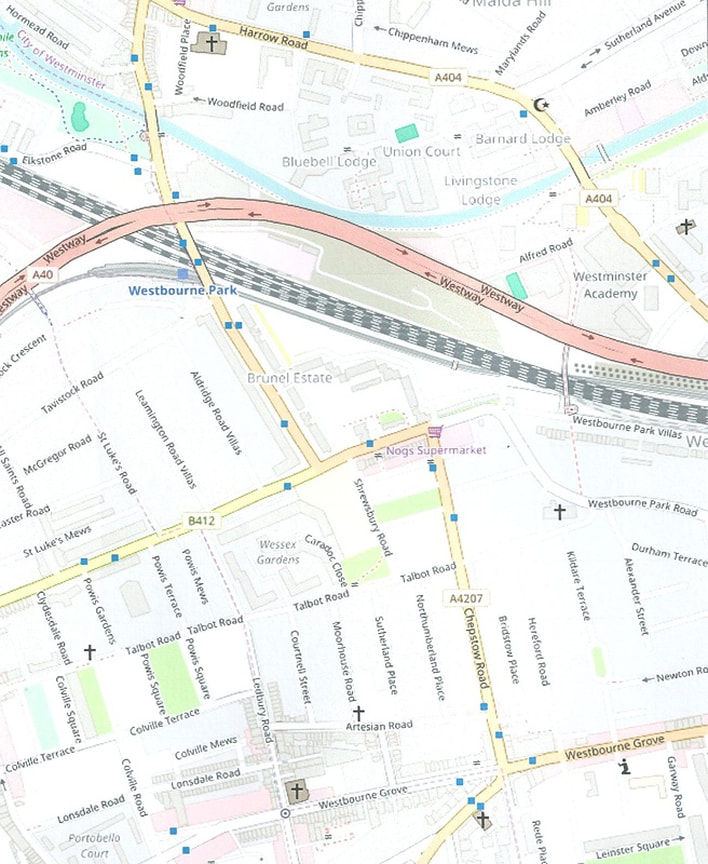
Up and Down the Harrow Road
The area depicted in The Lonely Londoners did indeed become, as Selvon shows, a nucleus for Caribbean migrants in the post-war decades. The Notting Hill of the period consisted of once salubrious housing which had descended into streets of run-down rooming houses, in which unscrupulous and sometimes violent landlords packed in as many migrant tenants as they could manage. This was the area subject to the serious white rioting some two years after the publication of The Lonely Londoners, and then – a year later – the scene too, at the junction of Golbourne Road and Southam Street, of the murder of the Antiguan, Kelso Cochrane, a murder whose perpetrators never faced justice.
One immediate response to the riots of 1958 was the inauguration of Carnival in London, as a means to affirm the culture of migrant London, directly drawn from the indigenous resources of the Caribbean. In 1959 the first Carnival, held in January in the very un-Carnival environment of St Pancras Town Hall, marked a relatively inauspicious start to what eventually became the annual summertime bank holiday event of the Notting Hill Carnival, re-imagining Sam Selvon’s mean streets of The Lonely Londoners for a different, rather more accommodating historical age.
Since Selvon’s times, many of the streets he depicts in the novel have undergone wholesale regeneration, with house prices to match. Aside from the days of Carnival itself, although many of the same streets exist, there are precious few means which can connect this section of the contemporary city to the London of Selvon’s 1950s.
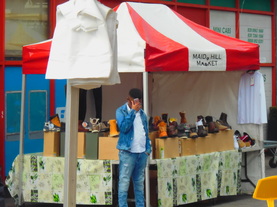 Yet twenty-first century migrant London, the descendant of The Lonely Londoners, is still visible enough in the area in which the novel was set: apparent not so much in the streets of crumbling lodging houses as in the nail parlours and hair salons which populate the Harrow Road – which is still inhabited largely by ‘the people … call the working class’. In literary terms, the transformation from Selvon’s times to our own can be gauged from Zadie Smith’s White Teeth.
Yet twenty-first century migrant London, the descendant of The Lonely Londoners, is still visible enough in the area in which the novel was set: apparent not so much in the streets of crumbling lodging houses as in the nail parlours and hair salons which populate the Harrow Road – which is still inhabited largely by ‘the people … call the working class’. In literary terms, the transformation from Selvon’s times to our own can be gauged from Zadie Smith’s White Teeth.
Bill Schwarz is a professor in the School of English and Drama at Queen Mary, University of London. He is the general editor (with Catherine Hall) of the Duke University Press series, ‘The Writings of Stuart Hall’, which comprises fifteen planned volumes.
References and Further Reading
Michael Fabre, ‘Sam Selvon: interviews and conversations’ in Susheila Nasta (ed.), Critical Perspectives on Sam Selvon, Three Continents Press, 1988
Michael McKeon, The Origins of the English Novel, 1600-1740, Hutchinson Radius, 1988
Sam Selvon, ‘Finding West Indian identity in London’ (1988) in Susheila Nasta and Anna Rutherford (eds), Tiger’s Triumph. Celebrating Sam Selvon, Dangaroo Press, 1995

